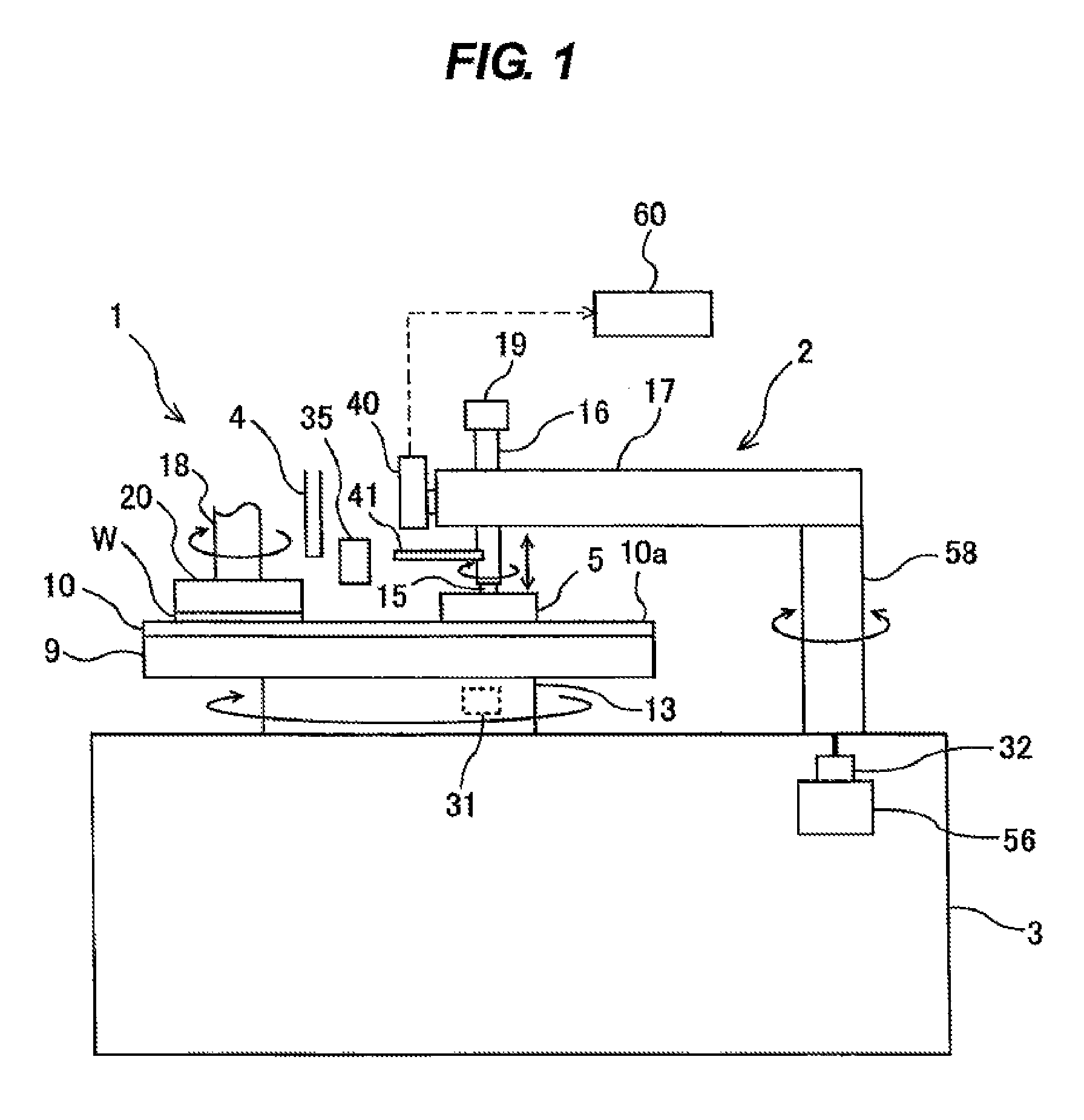Method of obtaining a sliding distance distribution of a dresser on a polishing member, method of obtaining a sliding vector distribution of a dresser on a polishing member, and polishing apparatus
a technology of sliding distance distribution and polishing member, which is applied in the direction of metal-working apparatus, manufacturing tools, and abrasive surface conditioning devices, etc., can solve the problems of lowering the polishing rate, polishing failure, and variation of the polishing rate on the polished surface of the workpiece, so as to achieve the effect of more accurate polishing
- Summary
- Abstract
- Description
- Claims
- Application Information
AI Technical Summary
Benefits of technology
Problems solved by technology
Method used
Image
Examples
Embodiment Construction
[0064]Embodiments according to the present invention will be explained with reference to the drawings. FIG. 1 is a schematic view showing a polishing apparatus for polishing a substrate, such as a wafer. As shown in FIG. 1, the polishing apparatus includes a polishing table 9 configured to hold a polishing pad (a polishing member) 10, a polishing unit 1 configured to polish a wafer W, a polishing liquid supply nozzle 4 configured to supply a polishing liquid onto the polishing pad 10, and a dressing unit 2 configured to dress (or condition) the polishing pad 10 which is used to polish the wafer W. The polishing unit 1 and the dressing unit 2 are provided on a base 3.
[0065]The polishing unit 1 includes a top ring (or a substrate holder) 20 coupled to a lower end of a top ring shaft 18. The top ring 20 is constructed so as to hold the wafer W on its lower surface by vacuum suction. The top ring shaft 18 is rotated by a motor (not shown in the drawing), and the top ring 20 and the wafe...
PUM
 Login to View More
Login to View More Abstract
Description
Claims
Application Information
 Login to View More
Login to View More - R&D
- Intellectual Property
- Life Sciences
- Materials
- Tech Scout
- Unparalleled Data Quality
- Higher Quality Content
- 60% Fewer Hallucinations
Browse by: Latest US Patents, China's latest patents, Technical Efficacy Thesaurus, Application Domain, Technology Topic, Popular Technical Reports.
© 2025 PatSnap. All rights reserved.Legal|Privacy policy|Modern Slavery Act Transparency Statement|Sitemap|About US| Contact US: help@patsnap.com



